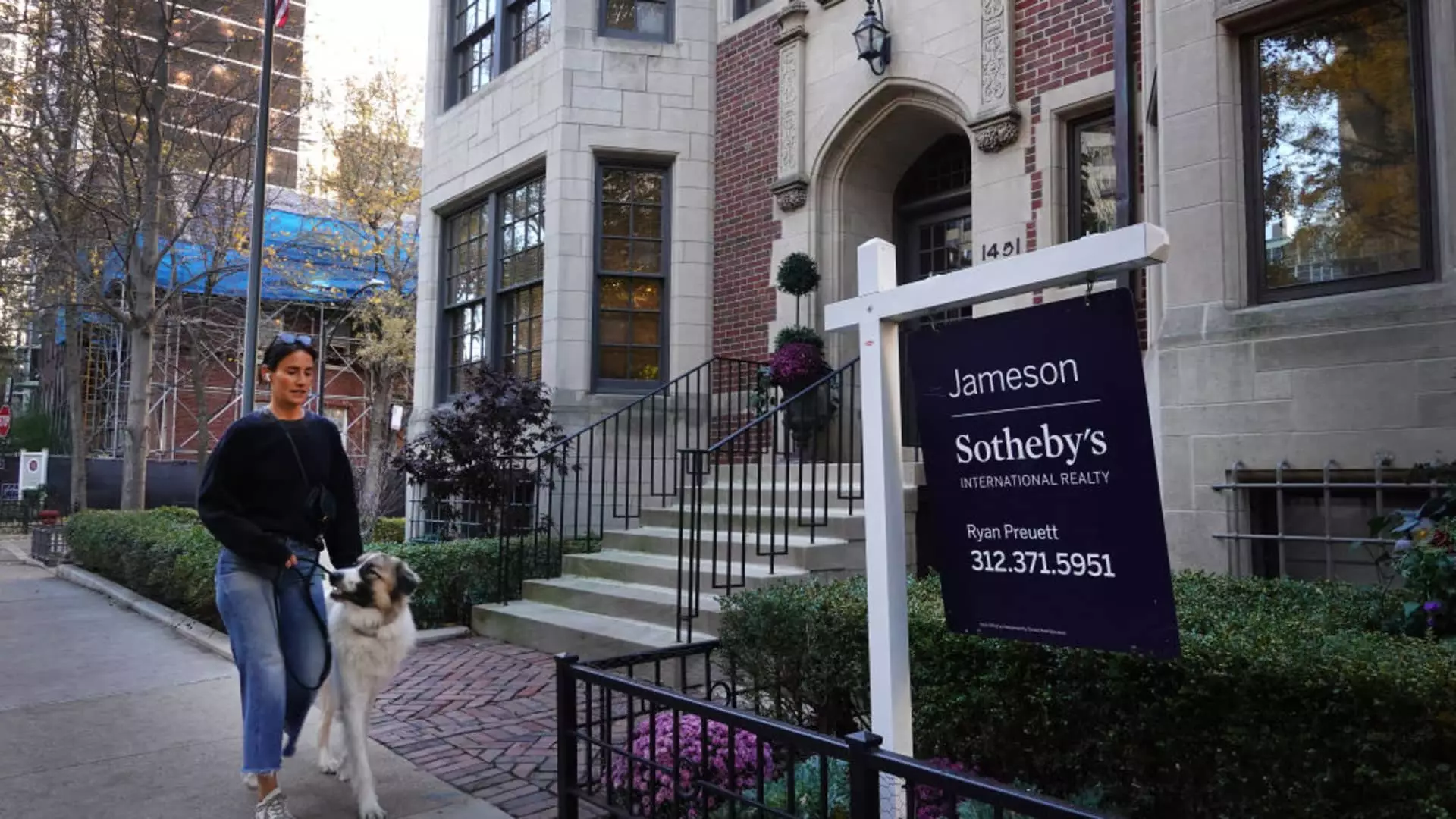The latest report from the National Association of Realtors (NAR) outlines a concerning trend for the housing market as it reports a 2.5% decline in sales of previously owned homes during August, bringing the annualized rate to 3.86 million units. This dip not only contrasts with the expectations of analysts but also emphasizes a persistent downturn, as the year-over-year sales reflect a 4.2% decrease from August 2023. This marks a worrying third consecutive month in which annual sales have remained under the 4 million threshold.
The significance of this decline should not be overlooked. It raises questions about consumer confidence and affordability, particularly since the reported sales are based on closings from contracts likely initiated in late June and July—a time when mortgage rates had only begun their gradual descent. The average rate for the widely utilized 30-year fixed mortgage was recorded at just above 7% in mid-June, dropping to about 6.7% by late July, indicating that potential buyers may have faced a window of hesitation due to higher interest rates just prior.
Despite the troubling sales figures, the dynamics present in the current housing environment suggest potential for recovery. NAR’s chief economist, Lawrence Yun, mentions that the dual factors of decreasing mortgage rates and a modest uptick in inventory create a compelling backdrop for future sales. He emphasizes that while sales figures remain uninspiring, the conditions poised by lower mortgage rates can rekindle interest in home buying.
Additionally, inventory levels appear to be on a slight rise, with homes for sale reaching 1.35 million units by the end of August—a 0.7% increase from July and a more substantial 22.7% increase from the previous year. However, it’s essential to contextualize that this still equates to merely a 4.2-month supply of available homes, which falls short of the 6-month benchmark typically considered balanced. This imbalance continues to pose challenges for buyers, especially in areas still exhibiting tight supply, such as many Northeast markets where sellers maintain a stronger negotiating position.
As home inventory begins to recover, the pressure on prices remains pronounced. The median price of existing homes sold in August reached a staggering $416,700, marking a 3.1% increase from the same month the previous year—the highest figure recorded for August to date. It’s noteworthy that part of this price escalation can be attributed to robust sales in the high-end market, particularly homes priced over $750,000. In contrast, properties below the $500,000 mark have seen declining sales, presenting a challenging environment for first-time homebuyers who traditionally seek more affordable options.
As noted, first-time buyers represented only 26% of August sales, which aligns with the historical low set back in November 2021. The consistent struggle of this demographic reinforces the notion of increased entry barriers into the housing market largely driven by elevated prices in entry-level homes.
Complementing these statistics, all-cash sales accounted for 26% of transactions in August, a slight drop from previous years but reflective of historical highs. This prevalence of cash buyers can indicate both liquidity among certain buyer segments and heightened competition for limited inventory.
With mortgage rates continuing their decline into September, now resting at around 6.15%, the landscape may be set for a gradual recovery. As financing costs decrease, prospective buyers may feel encouraged to re-enter the market, thereby stimulating sales activity moving forward. The interplay between buyer demand, lending costs, and inventory levels will be critical in determining the trajectory of the housing market in the coming months.
While August presented challenges with declining sales and rising prices, there is cautious optimism driven by a reduction in mortgage rates and an incremental increase in inventory. The evolution of these factors will be crucial for stakeholders across the housing spectrum as they navigate this complex and shifting landscape. The coming months will reveal if the current trends can indeed foster an environment conducive to recovery in home sales.

